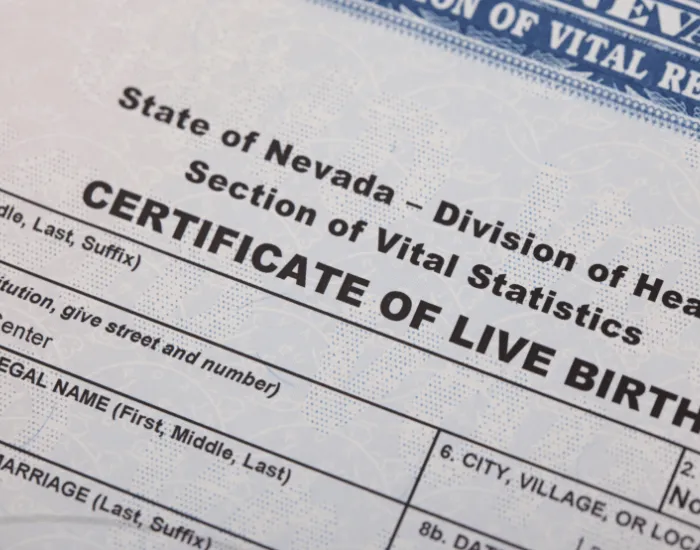SEPTEMBER 30, 2019
How Do I Change the Father on my Child’s Birth Certificate?

How do I change the father on my child’s birth certificate? It’s a very important question a parent may ask if they discover the man they thought was the father of their child really isn’t or if a man not listed on the certificate wants to establish a legal relationship with a child. It’s also a step to consider for people who never knew the identity of their father until a DNA test confirmed a biological relationship. Changing the father on a child’s birth certificate involves jumping through some bureaucratic hoops and it definitely requires a time commitment.
So how do I change the father on my child’s birth certificate? Here’s what you need to know.
Presumption of Paternity
When a baby is born in the United States, a birth certificate is completed and issued shortly following the birth. If the mother is unmarried and isn’t sure who the father is, she can choose to leave the space on the certificate for the father’s name blank. A presumption of paternity is generally made if a couple is married. This means that the husband is legally presumed to be the biological parent of the child since he is married to the mother, his name is added to the birth certificate, and he assumes legal responsibility for the child. If the paternity of the child is contested in either of these scenarios, a paternity test can establish or disprove a father/child biological relationship.
Paternity Testing is Required
Paternity testing if the mother is single: The mother can request that a legal paternity test be taken by the alleged father(s). This does not involve going to court in most cases, but it’s important that the paternity test be a legal, witnessed test, so that results can be used for child support, custody, etc. later.
Paternity testing if the mother is married: The husband is required to take a legal paternity test (an at-home test is not appropriate here since court-admissible results are required), and the report can be presented as evidence in court, should it be needed.
In either case, the mother can also choose to take a non-invasive prenatal DNA paternity test so that this information is known before the child is born. (This type of prenatal paternity test can be performed as early as seven weeks.) If you prefer to wait till after the baby’s born, you don’t have to wait till the child is older—newborn babies are tested all the time.
Changing the Father on the Birth Certificate
Adjudicating Parentage
To change the father on a birth certificate, an individual must first be legally pronounced as the legal guardian of the child, which is called adjudicating parentage. The state has a form (VS21) for adjudicating parentage and amending a birth certificate that requests information such as:
- The name(s) of the child or children whose parentage you are trying to amend
- Whether the child(ren) currently has(have) a legally-acknowledged/presumed father
- Signature or proof of notice submitted to the new paternity registrant
- If a legal DNA paternity test has been taken prior to filing the suit
This part of the process can be sped up considerably by having the results of the legal paternity test in hand before starting the application for parental adjudication.
What Happens Next
If a judge deems you have a valid case, he/she issues an order to adjudicate parentage and outlines which changes should be made to the birth certificate. A certified copy of this order (with the original seal and court-clerk signature) needs to accompany the VS1 form, along with any other information the state requires.
In most states, this information is submitted to the state’s Department of Vital Records department for review. If it’s accepted, a new birth certificate is issued.
Something to Keep in Mind if You Fathered a Child Out of Wedlock
In most states, if there is contested paternity, an alleged father has two (2) years to make a paternity claim, so it’s important not to wait. If the mother is married and a paternity case is brought to court by an alleged father to whom she is not married, it is up to the discretion of the court whether or not they deem it in the best interest of the minor child to change the birth certificate—even if the alleged father produces legal results showing he’s the biological father. If the man on the birth certificate is already supporting the child and has accepted responsibility, the court can choose to deny the claim of the biological father.
Wrapping It Up
Changing the father on a child’s birth certificate can take approximately two (2) months to complete, from start to finish. Making sure the legal DNA paternity test report done ahead of time is definitely an advantage and can save a lot of time, headaches, and unnecessary expense.
IMPORTANT: This article gives general information about changing the father on a child’s birth certificate in the United States only. Keep in mind the specific process can vary state by state and we are not providing legal advice. If you have further questions, we strongly suggest you contact a family-law attorney or your state’s Department of Vital Records.
About DNA Diagnostics Center (DDC)
DNA Diagnostic Center is the world leader in paternity and relationship testing. We serve healthcare professionals, government agencies, and individuals around the world to determine family relationships with trusted accuracy.
More Questions? Don’t hesitate to call us: we’re here to help!
CALL NOW





